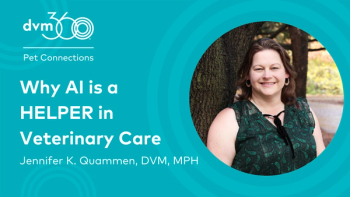
Old idea, new approach: Price auditing in veterinary practice
Digging into what it really costs your veterinary hospital to provide a new service.
Every service you perform in a veterinary practice has a cost, which includes not just the veterinarian's time, but also team members' time, facility costs, supplies and more. But when it comes time to consider all this in pricing the service, practice owners often hit a wall. They use regional data and surveys to set fees, but when the pet owner asks why a service costs that much, what's a veterinarian say? How do you explain your service fees when it's hard to determine what goes into them in the first place?
One software program, Profit Solver, promises some data to help in those price discussions. The program's price auditing calculates prices based on a practice's own data. The system considers all costs of running the practice and providing services and gives a snapshot of what price is needed to break even or profit on the service.
“An eye-opening thing”
Connie Passmore, hospital administrator at Centre Animal Hospital in State College, Pennsylvania, started using Profit Solver in 2012. Before, the management team reviewed benchmarks and surveyed practices in the area to set their pricing, taking into consideration what they believed clients would pay and estimating what would cover the practice's costs.
Profit Solver's results, however, were “an eye-opening thing” for Passmore and her boss, revealing the real cost-and the justified price-of their services.
“He sees clients struggle when he tells them a price,” Passmore says. “But this opened our eyes as to exactly how much it costs to provide a service with the employees we have on staff.”
Centre Animal Hospital practice owner Dr. Mark Michelotti opened the hospital as a solo practitioner in 1988. Now a five-doctor practice, Passmore says there's a lot to consider in pricing and cost fairness. After price auditing, it was obvious which services the practice was breaking even, or losing money on. “He was much more open to increasing prices as needed,” Passmore says.
Initial software setup cost a few thousand dollars, with a monthly fee of $180, but she says the practice recouped the cost and more in the first year of the program. “We saw an increase of $400 to $800 per day immediately,” Passmore says.
She ended up with a system that allows her to view the cost of providing a service depending on which veterinarian or technician performs it.
“Even though I know our veterinarians are paid a little differently, it was a real eye-opener to me to see the cost difference between different doctors and techs doing the procedures,” she says. “Our owner has been a veterinarian for 27 years, so of course he should be paid more than a new graduate.”
In the past, however, the practice charged the same for a service, regardless of who performed it. Passmore says the new program helps the practice owner see the value of his time versus the time of other employees.
“I now have a cost-per-minute for each employee and a charge-per-minute of what is needed to achieve a certain profit level for our employers,” Passmore says. “People are just floored because they thought they had a good handle on those costs. It's all laid out for you and so well done."
“Cover our costs and make a small profit”
Profit Solver focuses on reviewing the top 50 to 100 services from the past year, then practice management decides what to do in terms of price changes. Centre Animal Hospital took the data delivered to them and decided not to increase the price of its office visits, instead making small changes to charges for anal gland expression, anesthesia, lab tests, sedation, chemical panels, blood tests and a few others. Each service increased by $1 to $4 per service, Passmore says.
Clients didn't complain and only questioned one new charge-a biohazard fee for medical waste, which added $2.50 to client bills as needed. “Because of the number of times we do those services, it really added a lot to the bottom line,” she says. “We certainly don't want to gouge our clients, but we want to make sure we cover our costs and make a small profit.”
“Pet owners are price-sensitive”
In 2013, Zoetis partnered with Fee Technology, the company that makes Profit Solver, to distribute the software as a part of its new veterinary business solutions unit. Roughly 350 practices have signed on since the partnership began. Though it seems like an unlikely partnership, Dr. J. Michael McFarland, DABVP, group director and chief medical officer of companion animal veterinary operations for Zoetis, says pet wellness isn't the company's only concern.
“The profession is at an inflection point right now. Pet owners are price-sensitive, and practice owners struggle to communicate the value of their services in that environment,” Dr. McFarland says. “If nothing else, Profit Solver takes away all of the emotion and best-guess exercises that occur when veterinarians consider pricing changes.”
Whether it comes in form of Profit Solver, an outside consultant or internal work looking closely at regional and local veterinary charges, it's past time for many veterinarians to revisit how much they charge-and exactly why.
Rachael Zimlich is a freelance writer who lives in Cleveland, Ohio. She formerly worked for dvm360 magazine.
Newsletter
From exam room tips to practice management insights, get trusted veterinary news delivered straight to your inbox—subscribe to dvm360.






